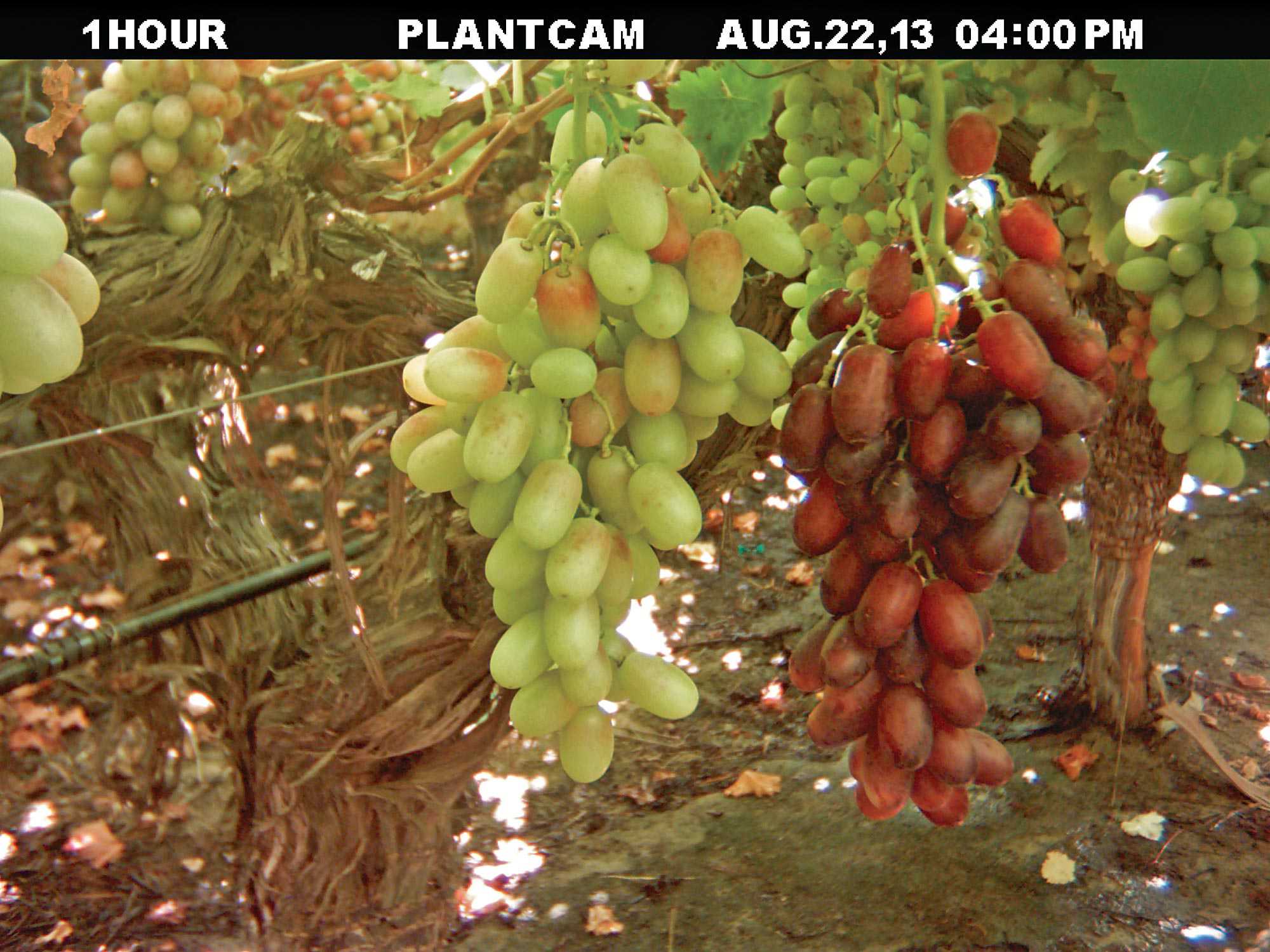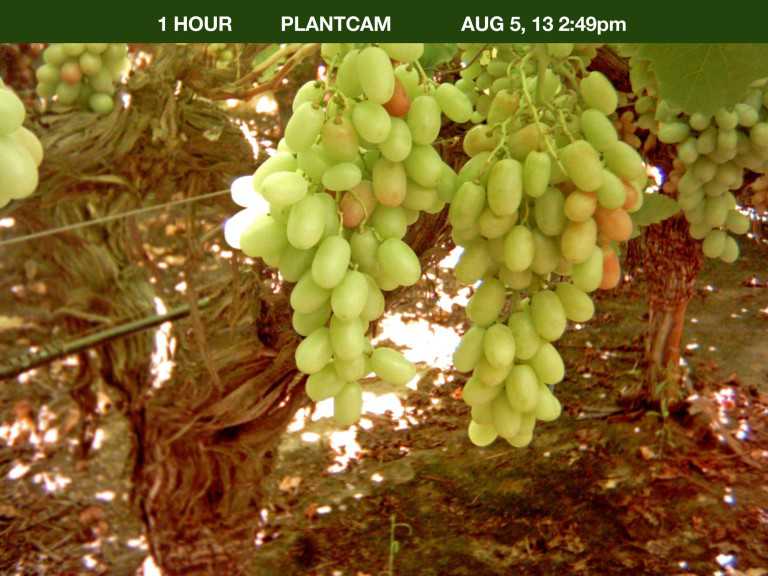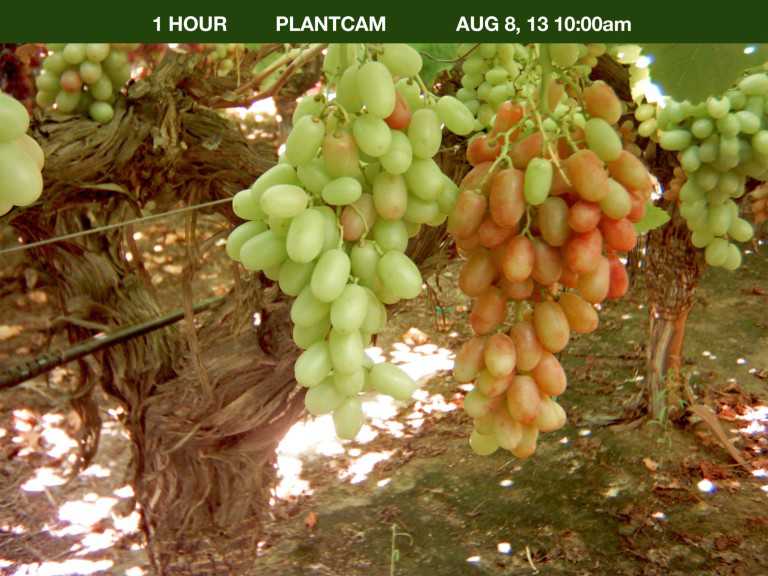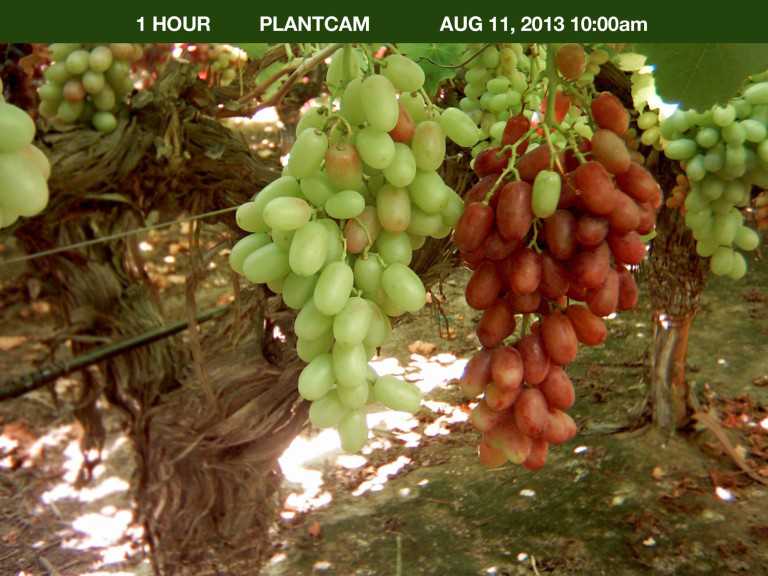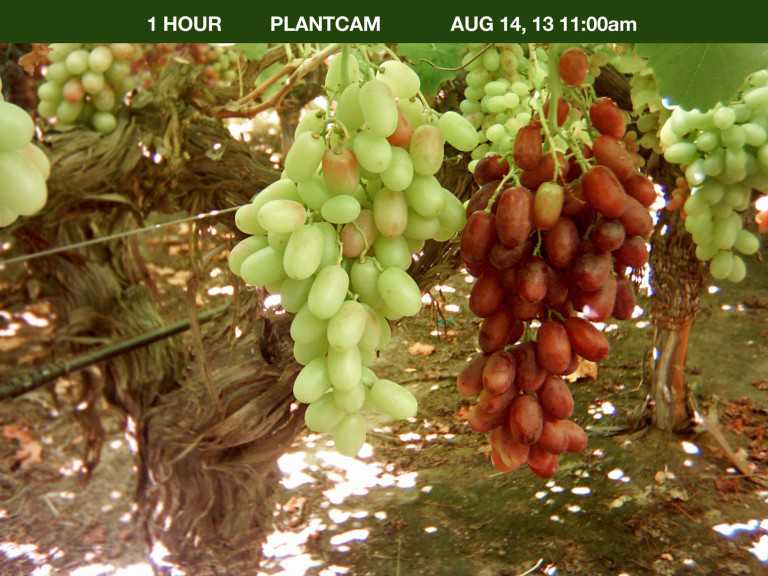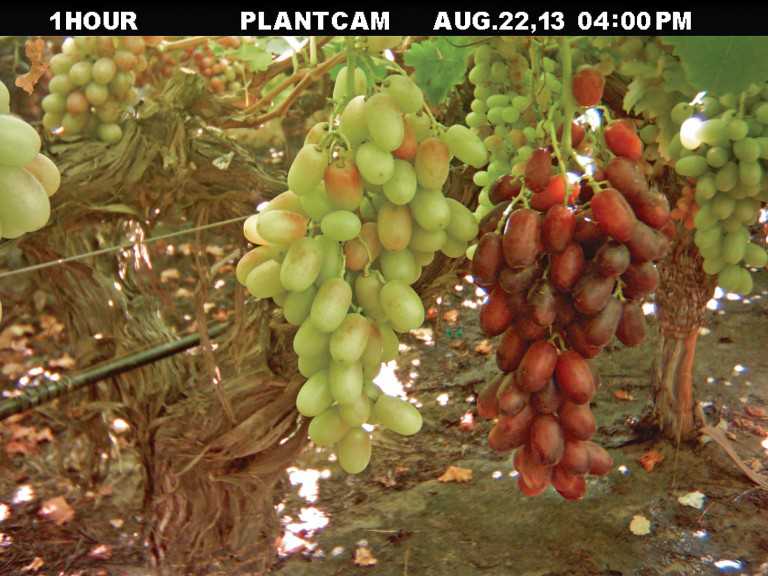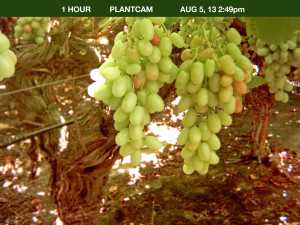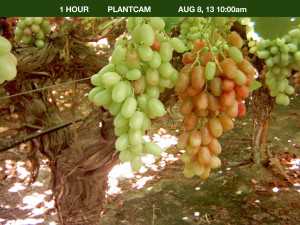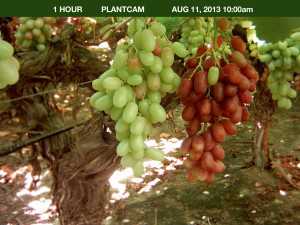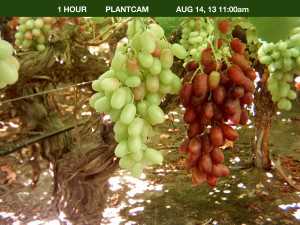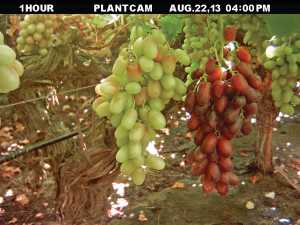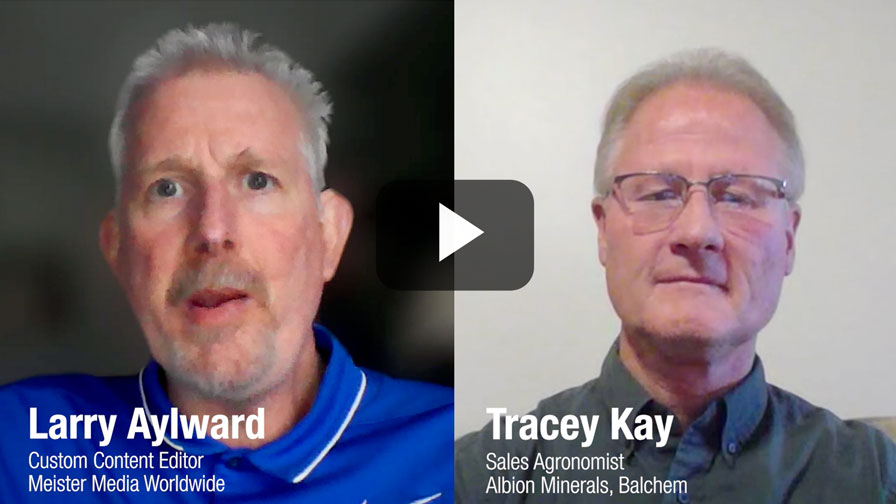Paint Your Grapes With This Effective Plant Growth Regulator [Slideshow]
[blackoutgallery id=”59976″]
The problem with most premium table grape production areas is that it can be difficult to get the lucrative red grape varieties to actually turn red, or “color up.” You need heat units to produce good sugars, after all, but if the temperatures don’t drop enough at night, you can’t get color.
“There are several variables affecting color, but that’s the biggest one, and we can’t control that,” says Rob Fritts, a technical development specialist for Valent BioSciences who works primarily on plant growth regulators.
Scientists have even pinpointed the exact temperature that the nighttime air needs to plunge below to get good color — 68°F. Unfortunately growers in the San Joaquin and Coachella valleys know all too well that there are many nights during the growing season that temperatures don’t touch 70.
No single tool will do the job in coloring up grapes, says Fritts. It requires a program approach, a program that includes consideration of cultivar, rootstock, fertilizer, irrigation, crop load, canopy management/light exposure, and weather. But all that won’t necessarily work without a plant growth regulator (PGR).
Program Approach
One common PGR used by table grape growers is ethephon, which is metabolized by the vine and converted into ethylene, a potent PGR. Ethephon works great and Fritts recommends it highly. But it does have its drawbacks in that in increasing the grapes’ maturity it can soften them up, and you definitely don’t want to soften them too much. That’s why Fritts recommends that ethephon be used in tandem with another PGR, Valent BioSciences’ ProTone.
ProTone is abscisic acid (S-ABA). It’s actually not new, having been discovered in the mid-1960s. One of the five major plant hormones found in all vascular plants, along with auxin, cytokinin, ethylene and gibberellin, it wasn’t readily available until commercialized by Valent BioSciences just a few years ago. It’s extremely safe, with a re-entry interval of just four hours, the bare minimum, according to government regulations.
“If you spray water in California,” notes Fritts, “it’s still four hours.”
The pre-harvest interval is zero days, which Fritts says gives the grower maximum flexibility. “Let’s say application is done one night. If the market changes and you need more fruit, you can go in the next day and get it.”
Shipping Overseas
ProTone is so safe it is exempt from maximum residue limit (MRL) considerations, unlike ethephon, which has an MRL of 1 part per million (ppm) in the U.S. The MRL in Europe is even lower, 0.7 ppm, and some grocers there are trying to distinguish themselves by instituting a limit of 0.35 ppm.
“That’s opened the door for ProTone,” he says, “because it can color the fruit without those issues.”
The lack of an MRL gives the grower greater decision-making power, notes Fritts. “A grower might think he’s going to sell a crop in the U.S., but if he decides later to send it to Europe, he has that flexibility.”
Also, because ethephon does start the softening process, it can be hard to arrange for the crunchy grapes California growers are known for to arrive in perfect eating condition. ProTone makes even the longest tanker ship trips tolerable for crisp-sweet grapes.
But don’t get Fritts wrong. He knows growers have had success with ethephon, and ProTone is not intended in any way to displace it. “In fact, we like to see both products used,” he says, “because they have different modes of action.”
Application Critical
There is one critical difference in when to apply the two materials, says Fritts. With ethephon, growers wait for the grapes to begin to color before application; but with ProTone, they shouldn’t wait. Instead, berry softening is the easiest parameter to determine application time. Even then, though, it depends on the variety, says Fritts. For example, under normal conditions with Flame Seedless you apply ProTone when half the berries are soft; for Crimson Seedless you wait until 95% of the berries are soft. These stages can vary in different conditions, such as in the desert.
Another big difference between ethephon and ProTone is the method of application. Unlike ProTone, ethephon translocates through the fruit. That means the applicator can drive the spray rig relatively fast. But applying ProTone takes more time and effort because the applicator must get good coverage.
This difference is absolutely critical to getting good results, says Fritts.
“Growers try to spray ProTone like its ethephon, so they don’t get the coverage they need. Spray coverage is the deal maker,” he says. “If people don’t get good spray coverage, they won’t get good results. That’s why our logo has a paint brush — you have to paint it on.”
Besides spraying the front and back of the cluster, you need to spray long enough – and with enough water — to get ProTone inside the cluster, says Fritts. “The growers we’ve worked with a lot will use two different sprayers,” he says. “The ethephon guy takes off, and the other guy with the ProTone goes slower, sprays more water, getting really good coverage.”
If you get that good coverage, Fritts says you will realize the benefits.
“In all the countries around world with table grape growing regions, ProTone is a key part of the growers’ programs,” he says, “and that’s a good testament that the product works.”
To The Rescue
ProTone does have one advantage over ethephon in that it can be used to “rescue” marketable table grape clusters that have adequate Brix but don’t have enough color, a time that ethephon should not be used. The fruit must be firm enough to remain on the vine for an additional 10 to 20 days.
The application will allow a grower to sell what previously may have been unmarketable fruit, says Fritts. In fact, a grower can target the application, tailoring it to fit his goals.
ProTone costs roughly $300 an acre, which is certainly expensive when compared to ethephon, but can be easily recouped when you consider it’s nearly always better to pick and sell fruit than leave it in the field.
The grower can decide how much ProTone to apply based on how much fruit he can sell at a given price.
For example, if the grower needs 300 boxes, than the ProTone will only be costing him $1 a box premium that is easily worth it in a decent market.
“Get over the sticker shock,” recommends Fritts. “You can make a business decision.”





